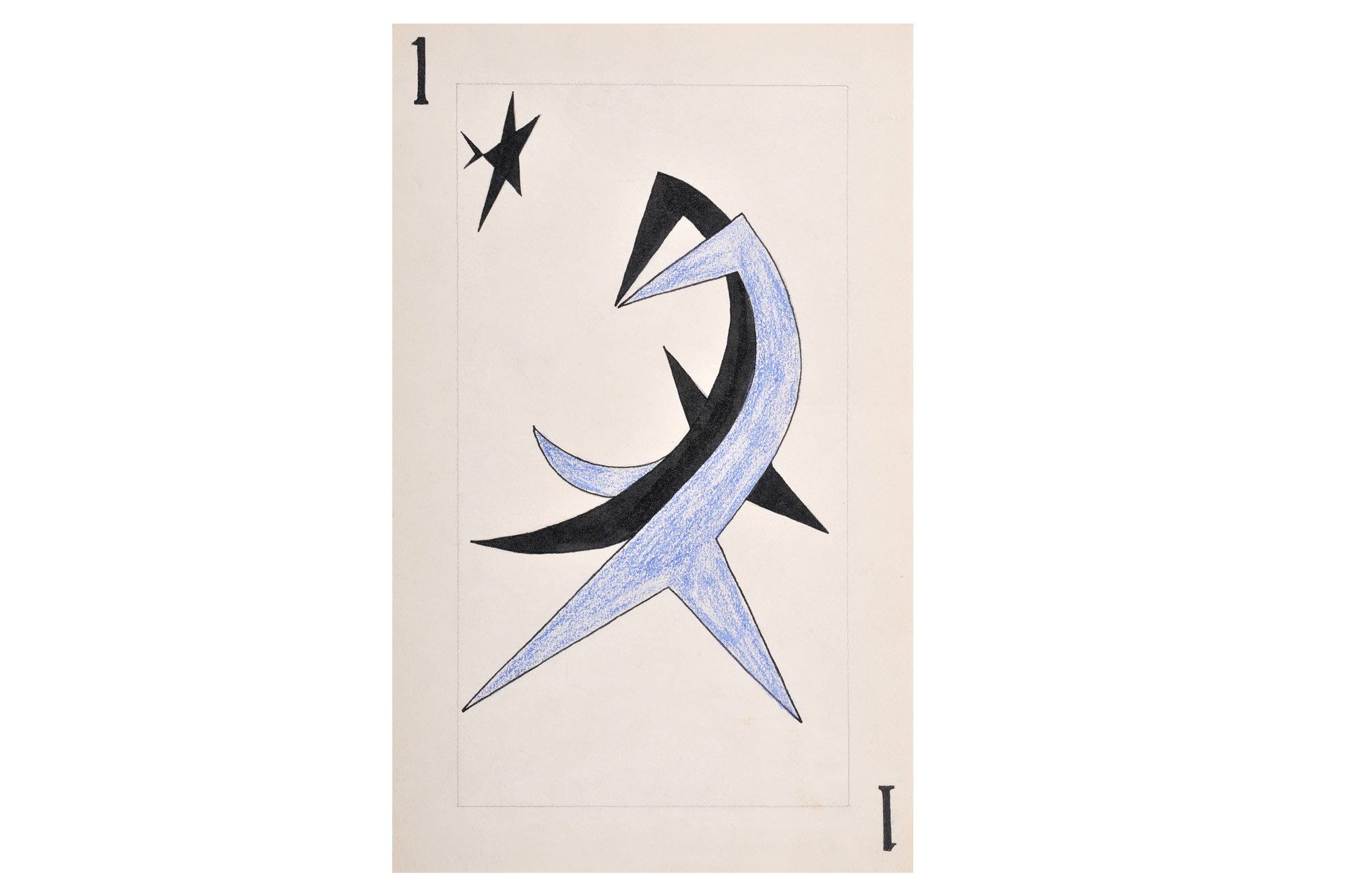Artist Oscar Dominguez (1906-1957, FR) was born in the city of San Cristóbal de La Laguna on the Spanish island of Tenerife. He was afflicted by a progressive disease, which stunted his growth and caused deformities to his limbs and his face. In 1927, Dominguez moved to Paris where he met Pablo Picasso and the Surrealists including André Breton and Paul Éluard. He joined the Surrealist group in 1934. Although he left it in the 1940, he would consider himself a Surrealist until the time of his death. He died in 1957 having committed suicide.
Jeu de Marseille
Among the many works by the artists and writers gathered at Villa Air-Bel, the most outstanding is certainly the Jeu de Marseille – a nod to the famous ‘Tarots de Marseille’, which André Breton was studying at the time. The Surrealists reinvented the iconography of a classical deck of cards in terms of the movement’s favourite figures and symbols. The suits became became the flame of Love (represented by Baudelaire, Stendhal’s Portuguese nun, Novalis), the black star of the Dream (Lautréamont, Lewis Carroll’s Alice, Sigmund Freud), the bloody wheel of the Revolution (Marquis de Sade, Lamiel, Pancho Villa) and the lock of Knowledge (Hegel, Hélène Smith, Paracelsus). A random draw determined who would design the different cards: Victor Brauner (Hegel and Hélène Smith), André Breton (Paracelsus and the Ace of Knowledge), Jacques Hérold (Lamiel and Sade), André Masson (La Religieuse portugaise and Novalis), Max Ernst (Pancho Villa and the Ace of Love), Jacqueline Lamba (Ace of Revolution and Baudelaire), Wifredo Lam (Alice and Lautréamont) and Oscar Dominguez (Freud and the Ace of Dream). The joker was based on Alfred Jarry’s drawing of Father Ubu, while Frédéric Delanglade designed the backs of the cards. Frédéric Delanglade was then tasked with standardising the sketches by redrawing them in a continuous line. In 1943, they were published for the first time in New York in the third issue of Revue WW and then edited in 1983 by André Dimanche.









 Oscar Dominguez, 'As de rêve - Etoile', 1941, Collection Musée Cantini, Marseille
Oscar Dominguez, 'As de rêve - Etoile', 1941, Collection Musée Cantini, Marseille